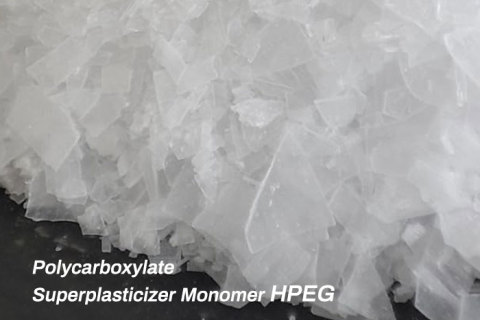
- Home
- >
News
HPEG polycarboxylate superplasticizer has rapidly become the "new darling" of the construction industry, thanks to its outstanding performance advantages.
In the modern construction world, achieving stronger, more durable, and efficient concrete is no longer just an aspiration — it’s science. One material at the forefront of this innovation is Polycarboxylate Superplasticizer Powder (PCE Powder). But what makes this powder so unique? Let’s dive into its chemistry and applications.
Forget focusing solely on steel and concrete! Behind the scenes of modern construction, a crucial material is quietly playing a significant role: PCE Powder (Polycarboxylate Ether Superplasticizer). It may not be as visually prominent as concrete or as robust as steel, but with its unique "invisible strength," PCE Powder empowers construction with limitless possibilities and achieves superior quality.
Polycarboxylate Superplasticizer Monomer HPEG is a cutting-edge additive designed for the construction industry, enhancing the properties of concrete and cement-based materials. Its remarkable ability to improve the workability and strength of concrete makes it a vital resource for modern building projects.
Polycarboxylate Superplasticizer Monomer HPEG is a high-performance building material additive primarily used in the production of concrete and cement products. It significantly enhances the flowability and strength of concrete, making it an essential component in modern construction.
With the continuous progress of modern construction technology, especially the commercialization of ordinary concrete, the construction industry's demand for concrete is not only limited to strength, but also includes environmental protection, durability, and meeting specific project requirements. In this context, polycarboxylate superplasticizers (PCE), as a new type of admixture, have received widespread attention due to their excellent performance.
HPEG, short for Hydroxy Polyether Glycol, is a polycarboxylic acid superplasticizer monomer widely used in the construction industry. HPEG, also known as water-soluble polyether ester, is a crucial component in modern concrete and other building materials.
Polycarboxylate Superplasticizer (PCE Powder) is a new type of high-performance concrete additive widely used in the construction industry. Its unique molecular structure endows it with excellent superplasticizing properties, significantly improving the workability and strength of concrete while reducing cement consumption, aligning with sustainable building concepts.
PCE Powder, short for Polycarboxylate Ether Powder, is a new type of high-performance concrete admixture. It is primarily used to improve the workability and performance of concrete, widely applied in construction, infrastructure, and precast elements.
In the modern construction industry, the quality of concrete directly affects the safety and durability of projects. As a leading chemical company, we are proud to introduce our Polycarboxylate Superplasticizer Monomer — HPEG (Hydroxy Polyether Glycol). HPEG not only improves the fluidity of concrete but also enhances its strength and durability, making it an ideal choice for your engineering projects.
Polycarboxylate superplasticizer (PCE) is a high-performance chemical building material widely used in the production of concrete, mortar, and other construction materials. As an essential component of modern concrete technology, polycarboxylate superplasticizer significantly enhances the workability, strength, and durability of concrete.
In the world of construction, achieving the perfect concrete mix is crucial for durability and performance. One of the key components that can significantly improve your concrete's workability and strength is Concrete Superplasticizer Monomer TPEG. This innovative product is designed to meet the demands of modern construction projects, ensuring you achieve superior results every time.












